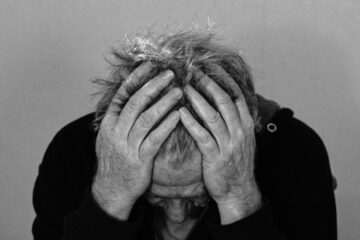![]()
Introduction:
Bhopal gas Tragedy was one of the main incidents which led to the establishment of the concept of Absolute Liability, also known as M.C. Mehta v Union of India[1]. However, this case was based on strict liability, but with no exception, an individual can be made absolutely liable for his own acts. Because of the Bhopal Gas leak majority of people lost their lives and many suffered fatal diseases through the gas leak. This made an urgent need for modification of rules under strict liability which should not provide any exceptions to the defendant in order to escape from his liability.
In this case, the Supreme Court has laid certain rules, which is comparatively wider than the scope of rules laid in the case of Rylands v Fletcher. The Supreme Court has laid down that in any case where an enterprise or industry is associated with a hazardous or activity which is inherently dangerous on the account that it can take the life of a person or an accident would harm the large population, the enterprise would be held strictly and absolutely liable to compensate for such a loss. The rule of absolute liability is based on the rule of strict liability.
Essentials of Absolute Liability
Absolute liability is a basis of strict liability without any exceptions.
- Dangerous Thing:
A defendant will be held liable for the escape of any dangerous thing from his premises. “Dangerous” here means any sort of mischief or thing which can cause harm to a person’s body. The rule laid under strict liability specifies substances like gas, electricity, explosive things, fumes, trees, and wires are also included under the definition of dangerous things if it escapes the jurisdiction of the owner.
- Escape:
The dangerous thing which can cause harm to any person shall escape the premises of the owner in order to make the defendant absolutely liable. However, such a substance if has not escaped the premises of the owner but has caused harm to the plaintiff due to his own negligence or carelessness then the defendant cannot be held liable for such an act. However, absolute liability is applicable even if the owner has taken proper care of the dangerous thing and still it has caused harm to the public.
- Non-Natural Use of Land:
“Water collected on land for domestic purposes does not amount to non-natural use of land but if one is storing it in large quantities like in a reservoir as it was the case in Ryland v Fletcher[2] then it amounts to non-natural use of land. The difference between natural and non-natural use of land by keeping in mind the surrounding social conditions. As the growing of trees and plants on land is considered as a natural use of land but if one starts growing trees which are poisonous in nature then it will be considered as non-natural use of land. If an issue arises between the defendant and the plaintiff even though the defendant is using the land naturally, the court will not hold the defendant liable for his conduct”[3].
- Mischief:
In order to establish the guilt of the defendant, it is necessary for the plaintiff to prove that the defendant had done the non-natural usage of land and due to his negligence the dangerous thing escaped from his premises, only then the defendant can be made liable to compensate. “In the case of Charing Cross Electric Supply Co. vs Hydraulic Power Co., the defendant was assigned to supply water for industrial works. But he was unable to keep their mains charged with a minimum pressure that was required which led to the bursting of the pipeline at different places. This resulted in causing heavy damage to the plaintiff which was proved in the court of law. The defendants were held liable in spite of this that they were not at fault”[4].
Difference between Absolute and Strict Liability
- In case of Absolute liability, where the enterprises are involved in inherently dangerous activities or any sort of hazardous activity then such an enterprise will be held liable.
- In case of strict liability, the dangerous thing shall escape from the premises of the owner to hold the defendant liable, however, in order to hold the defendant liable in case of absolute liability it is not necessary that the dangerous thing has escaped from the premises if at all within the premises any harm has been caused then the defendant will be held absolute liable.
- In case of absolute liability, there are no exceptions, unlike strict liability.
- The rule laid down in Rylands v Fletcher is applicable only in case of non-natural usage of land, however, absolute liability is applicable even to the natural usage of land. In such a case if the dangerous thing escapes from the premises of the owner then he will be held liable it doesn’t matter whether the owner has taken proper care or not.
- “The extent of damages depends on the magnitude and financial capability of the institute. The Supreme Court also stated that the enterprise must be held to be under an obligation to ensure that the hazardous or inherently dangerous activities in which it is engaged must be conducted with the highest standards of safety and security and if any harm results on account of such negligent activity, the enterprise/institute must be held absolutely liable to compensate. for any damage caused and no opportunity is to given to answer to the enterprise to say that it had taken all reasonable care and that the harm caused without any negligence on his part”[5].
References:
[1] AIR 1987 S.C 1086
[2] 1868 (UHKL) 1
[3] Ibid no. 1
[4] (1914) 3 KB 772
[5] Absolute Liability and Strict Liability, , RACOLB LEGAL , http://racolblegal.com/the-distinction-between-absolute-liability-and-strict-liability/ (last visited May 28, 2020).



0 Comments